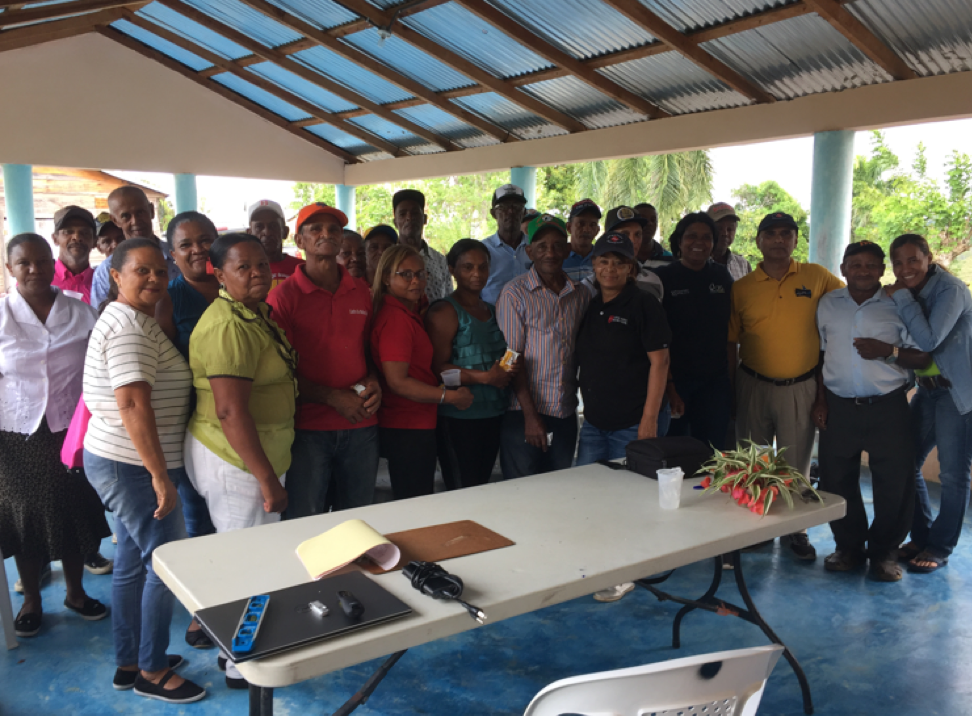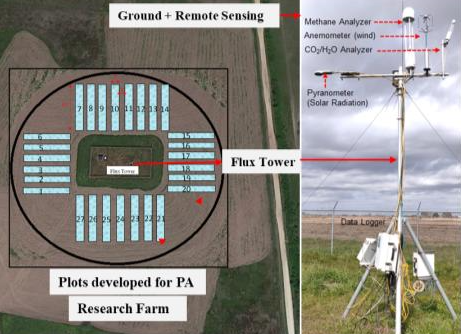October 18 –A research project to determine the impact of climate change on cotton, corn, and sorghum has reached a new milestone, with the completed installation of sensors designed to gather critical data.
The sensors are a part of the efforts of College of Agriculture and Human Sciences (CAHS) Associate Professor Ram Ray, Ph.D., and members of the CAHS Cooperative Agricultural Research Center Natural Resources and Environmental Systems team to monitor parameters, including soil moisture, precipitation, air temperature, wind speed, solar radiation, humidity, evapotranspiration, and greenhouse gases (e.g., Carbon and Methane).
In 2016, the group installed an Eddy Covariance (EC) Flux Tower on the Prairie View A&M University (PVAMU) Gov. Bill and Vara Daniel Farm and Ranch to capture data. The EC tower is now associated with sensors to gauge carbon dioxide and methane levels, and evapotranspiration — the process by which water is transferred from the land to the atmosphere by evaporation from the soil and other surfaces and by transpiration from plants.
“If you know the science behind climate change, one of the leading causes of climate change is global warming,” Ray said. “One of the leading causes of global warming is increasing greenhouse gas emissions. To support climate change initiatives and mitigation, we need to know the quantity and source of emissions before proposing reducing or controlling them.”
The goal of the project is to quantify the impact of climate change on crop water requirements, crop nutrients, and soil and water qualities for cotton, corn, and sorghum at Brazos River Watershed.
As the team gains more insight from the data captured by the sensors on the EC tower, they will train limited resources, socially disadvantaged farmers, ranchers, and other stakeholders on the outcomes of the project to improve their farm operations.
Ray is the project’s principal investigator, and Ali Fares, Ph.D., Ripendra Awal, Ph.D., Peter Ampim, Ph.D., Nelson Daniels, Ph.D., and Selamawit Woldesenbet, Ph.D., are co-principal investigators of the project, which is funded by a United States Department of Agriculture-National Institute of Food and Agriculture’s Capacity Building Grant
This work was supported by the USDA National Institute of Food and Agriculture, 1890 Extension Formula Program projects under Section 1444.
Ram L. Ray, Ph.D., P.E.
Associate Professor
raray@pvamu.edu
(936) 261-5094



